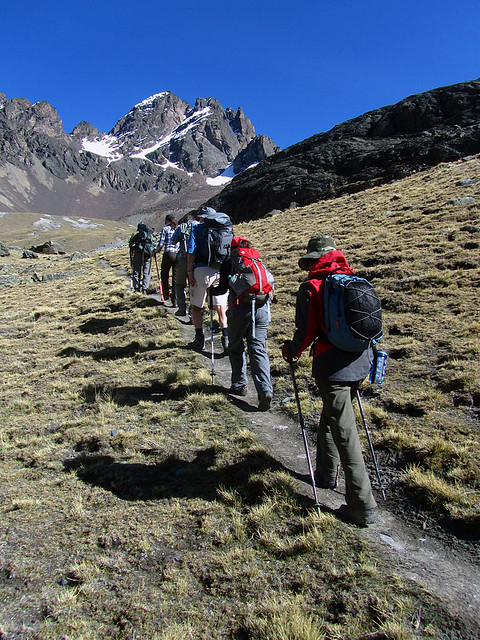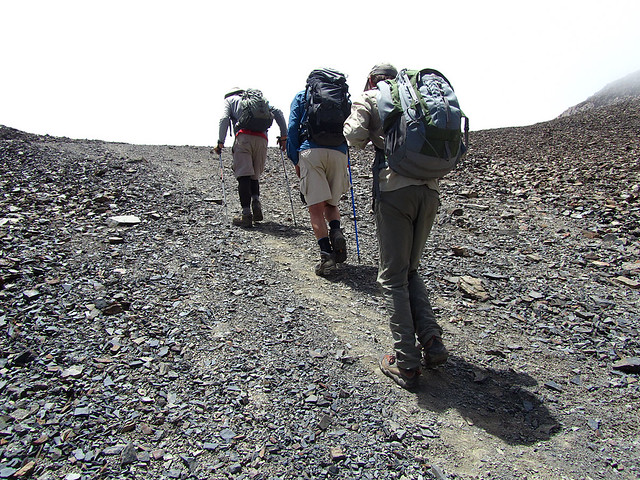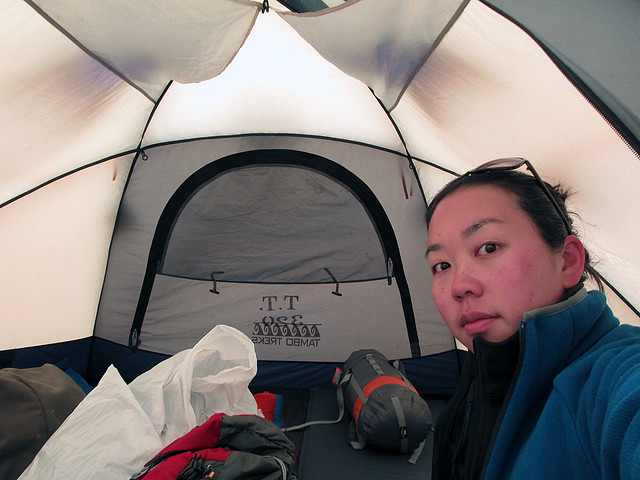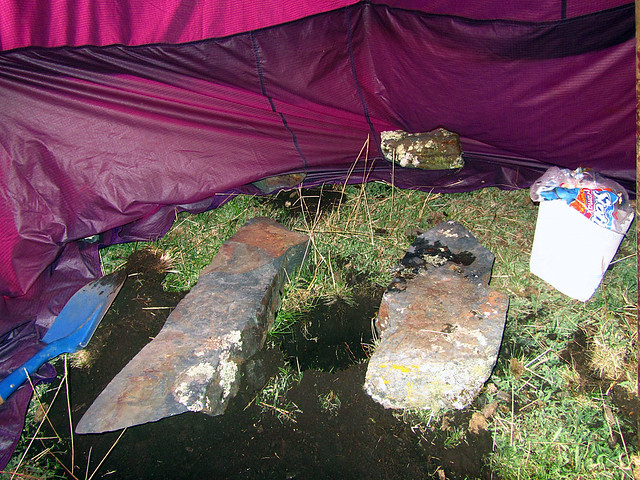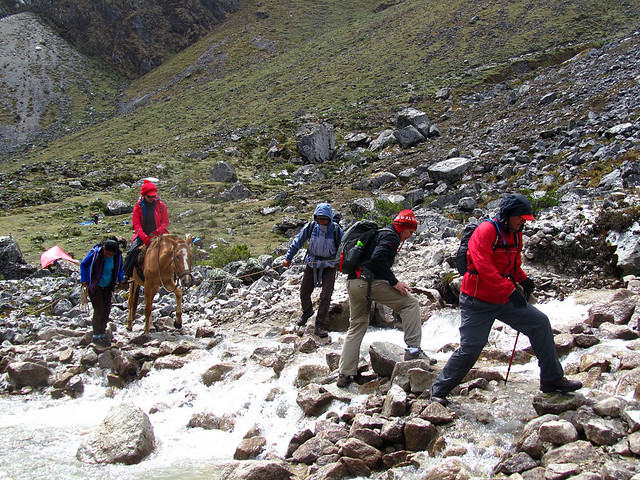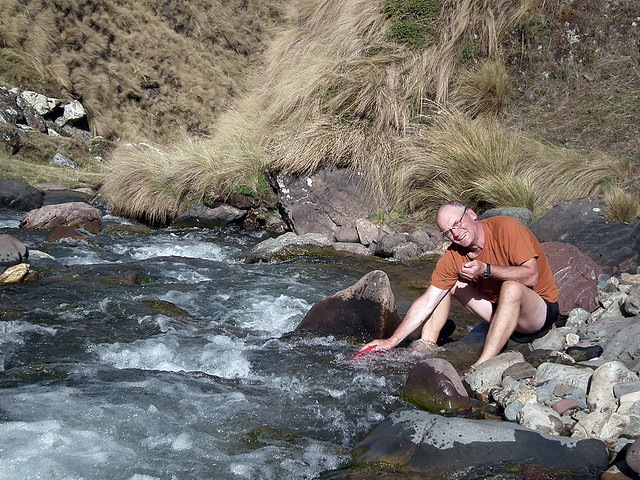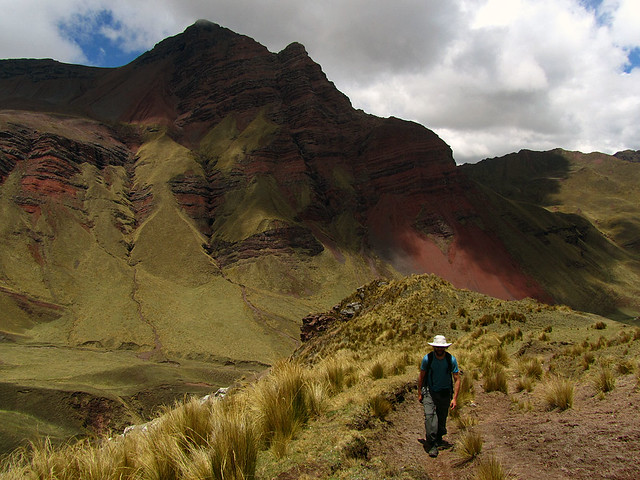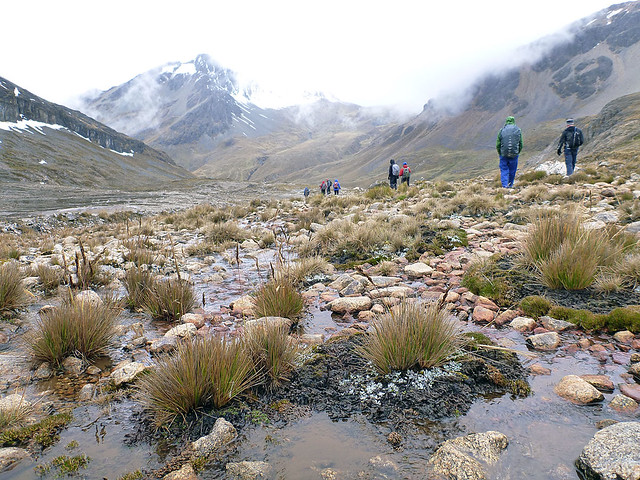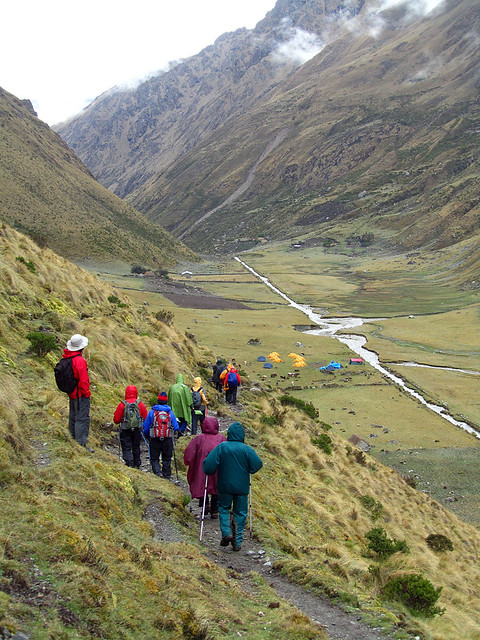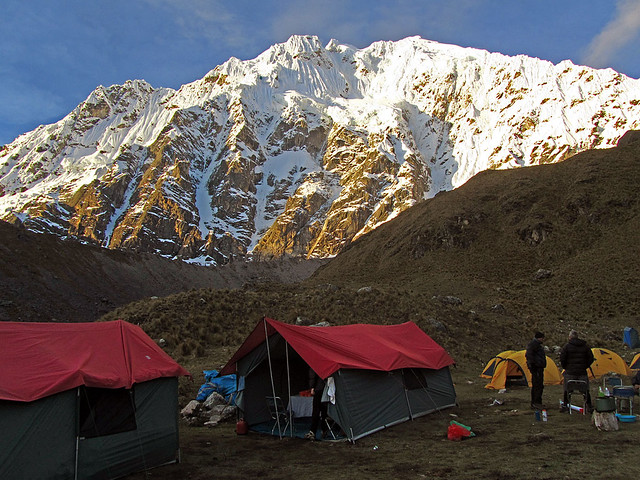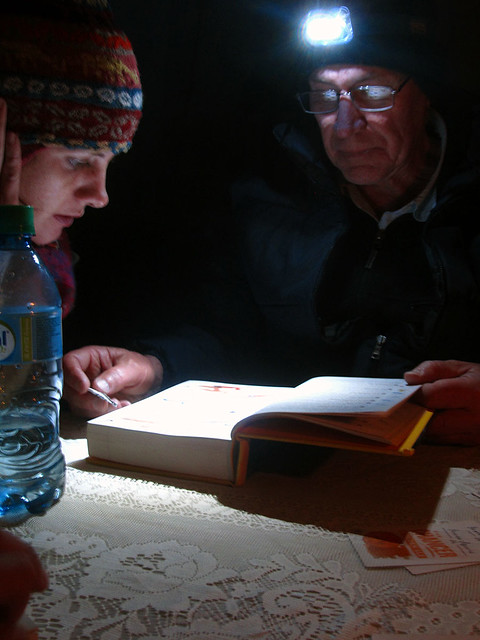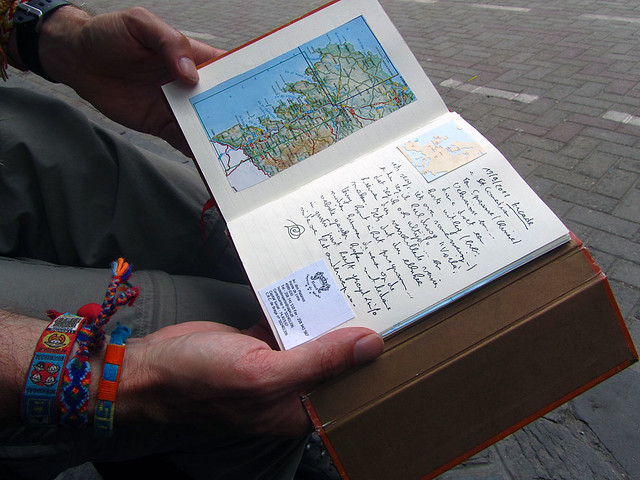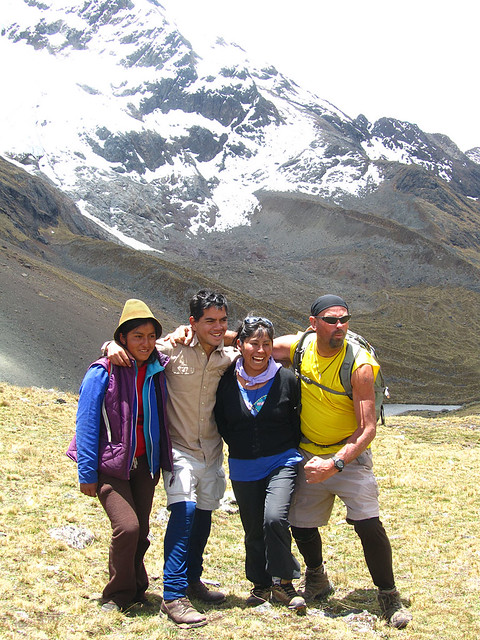Before I left for Peru, I wasn’t sure what I was getting myself into. Three weeks of trekking sounded fun — but what exactly is trekking anyhow? “Is trekking just like hiking?” I asked my friends, but nobody seemed to know.
Turns out that trekking is just like hiking — except that you do it hour after hour, day after day. Trekking is walking cross-country all day, camping at night (though some treks do use lodges for accommodation), and reveling in the natural environment.
Let me explain how my trek worked.
High Andes and Altiplano Trek
Because the dates fit my schedule, I selected the Andes and Altiplano Trek from a company called World Expeditions. This 22-day adventure cost $3420, which included a week of trekking in the Peruvian Andes and four days of trekking in the Bolivian altiplano (or high plains).
On our hikes, all of our meals were provided. (They were simple meals, but nourishing.) Tents and sleeping bags were provided, and so was a warm jacket for the evenings. For $3 a day, we could rent a Thermarest mattress.
About half the time, we were not trekking. Part of that time was spent moving from one place to another. But most of it was spent doing standard touristy things: exploring Cusco, marveling at Machu Picchu, shopping in La Paz. Except for the final hotel in Bolivia (which was very nice), most of the accomodations were standard. (And that was fine — after all, we slept in tents for half of the trip!)
A Typical Day
On the trek, a typical day might go something like this:
- At 6:30, the assistant guides go from tent to tent, waking the trekkers. They offer hot tea or coffee, as well as a bowl of warm water for bathing. (There are generally a few early risers like me who are up well before 6:30.)
- At 7:30, breakfast is served in the mess tent. There’s plenty of hot water for coffee and tea, and there are rolls and/or cold cereal (with powdered milk). The cook provides something hot: eggs, porridge, etc.
- At 8:00, we begin the day’s journey. Those who are sick ride horses. Everyone else spreads out, with the faster people following the main guide at the front of the pack. Slower folks (or those who want to chat or take pictures) lag behind. One assitant guide brings up the rear, and another assistant guide roams the line to be sure everyone is okay.
- Every hour or so (depending on the difficulty of the hike), the group stops and gathers together for a short break. Sometimes the breaks are longer, and we all eat and drink.
- At about 13:00 or 14:00, we stop for lunch. During our morning walk, the cook and his staff have passed us with their mules. They prepare a hot lunch, which generally includes soup and something else (with the “something else” often being pasta). Sometimes there’s time for a nap after lunch. Sometimes not.
- The afternoon hike is generally much shorter — often just an hour or two.
- We reach camp at about 16:00 or 17:00. We take off our hiking boots, change into warmer clothes, and gather in the mess tent to wait for dinner. While we wait, we chat and play cards. (I spent some of my time pestering the assitant guides, Darwin and Tina, to teach me more Spanish.)
- Dinner is served at about 19:00. (Unless the Peruvian national soccer team is playing a World Cup qualifier against Chile. Then dinner is served at 20:30.)
The evening meal starts with soup before continuing with protein and a starch. - People are finished eating by about 20:00 or 20:30. Most folks head straight to bed, though some hardy souls linger for more cards or conversation.
That’s the routine. Every day, we hike for six to eight hours, covering up to fifteen kilometers over mountainous terrain. The elevation rises from 3400 meters to over 5000 meters — and then falls away again. (And it’s because of this elevation that trekking is difficult. At high altitude, it’s important to move slowly and steadily.)
There are variations every day, of course. We might stop by a rural school, for instance, to visit with the teacher and students. We might explore some Incan ruins. We might encounter a local farmer and buy a wheel of cheese from him. And so on.
Sounds like fun, right? It is. But the fun doesn’t come without costs.
The Costs
Some mornings, trekking looks like this:
But other mornings, it looks like this:
Or worse. When you’re walking from mountain pass to mountain pass at high altitude, the air can be cold. Freezing, even. And if the rain and wind come, life gets miserable.
In camp isn’t any better. Here’s where you live:
Since your tent is too small to do anything but sleep, most of your time is spent in the mess tent:
And what about when nature calls? Well, when you’re in camp, you have a place to go, though it’s not always pretty:
When you’re on the trail, you go behind a bush. That’s easier for men than for women, of course, though both genders suffer when it’s time to take a crap. Especially if you’re sick.
Yes, people get sick while trekking, and yes people get hurt. In our group of sixteen, nearly everyone became sick at some point. Altitude sickenss and food poisoning are the most common problems, and they strike indiscriminately. You can be the fittest athlete in the world and altitude sickness can still lay you low. To protect yourself, it’s best to exercise caution: go slowly, drink lots of water, and don’t eat foods that you know will cause problems. (I avoided eggs during the entire trek, for instance, and limited my dairy intake.)
And if you want to clean up after all of this? If you’re lucky, you can get a bowl of warm water to wash up once you reach camp. Several of us preferred to brave the cold in order get even cleaner:
As you might imagine, all of this work can be draining. It’s no wonder many folks needed ten or eleven or twelve hours of sleep per night.
These are the costs of trekking, but what about the rewards? Well, the rewards are spectacular.
The Rewards
For being willing to rough it, trekkers are treated to spectacular scenery across a variety of terrains.
After eight hours of walking, it’s a huge psychological lift to see the camp come into view.
Our most difficult day dawned cold and clear. We were camping at the base of Salcantay. As we began the 600-meter climb to the pass, the wind and the rain began. It was miserable work. Once we cleared the top and descended, our spirits raised some (and chatter increased), but the rest of the morning was still cold and wet. As we neared our campsite in the mid-afternoon, the rain ceased. The sun came out. Our moods soared.
And some of the campsites were truly spectacular. People would pay big bucks to have views like this.
In the evening, the cameraderie offers another reward. Our group played cards, told stories, and shared photos. It was cozy and familial.
But I think the top reward for me was simply being outdoors, being close to nature. There’s just something about being ouside in the world that city living cannot provide. Standing on a mountaintop for ten minutes recharges my mental batteries.
And, of course, there’s one final reward. When you travel, when you trek across mountain valleys, you get to write about it — and to share your journal with others. Here, for instance, is the travel diary of Carl, the man I met in Aguas Calientes. He’s walked thousands of kilometers this year, and he’s documented his journey:
Trekking is hard work, but it’s worth it. For me, anyhow. I know it’s not for everyone. I doubt my wife will ever join me for an adventure like this. Sleeping in a tent and shitting in a hole are costs that are too high for her. That’s fine. But for those of us willing to put up with these discomforts, trekking is a great way to see the world.
